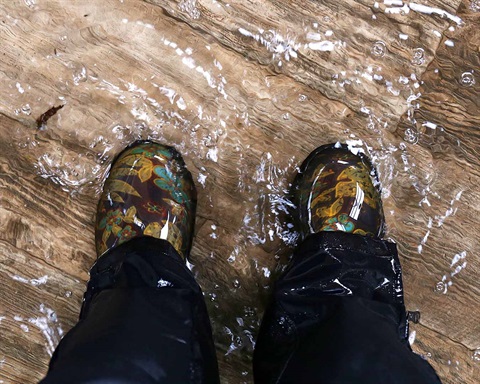Flood Cleanup

Properly cleaning materials from a flooded home is important for your family's health. This page offers a list of resources for those affected by flooding inside their homes or businesses.
General Tips
Disposing debris
Sewer backup
Cleaning up
Before you start
- Flood waters can contain sewage and other harmful substances. Standing water can be a breeding ground for viruses, bacteria and mold.
- Wear the proper items while you clean up: Goggles, N-95 respirator, long-sleeved shirt, protective gloves, long pants, and boots or work shoes.
- If you have insurance, contact your agent. Take photos of the area before cleaning and keep records of all your expenses.
- All surfaces touched by flood water should be considered contaminated.
- Any repair/damage beyond drywall removal, including replacement of electrical outlets less than 2 feet above the floor or other similar repairs, requires a building permit.
- A floodplain development permit must also be obtained for any construction or development activity in a floodplain area.
Cleanup tips
- Clean and dry everything in your home within 24 to 48 hours, if possible.
- Use disinfectant and water on hard surfaces. Do not mix cleaning chemicals and do not add bleach to other chemicals.
- Keep the area well ventilated by opening doors and windows and use fans and dehumidifiers. Only use fans if you don't see signs of mold. Fans can help spread mold.
- Soft items that are non-washable should be thrown away, i.e. mattresses or stuffed toys too large for a washing machine.
Additional Resources
Staying Safe After a Flood
Guide to Mold Cleanup
Flood Damage Permit Requirements